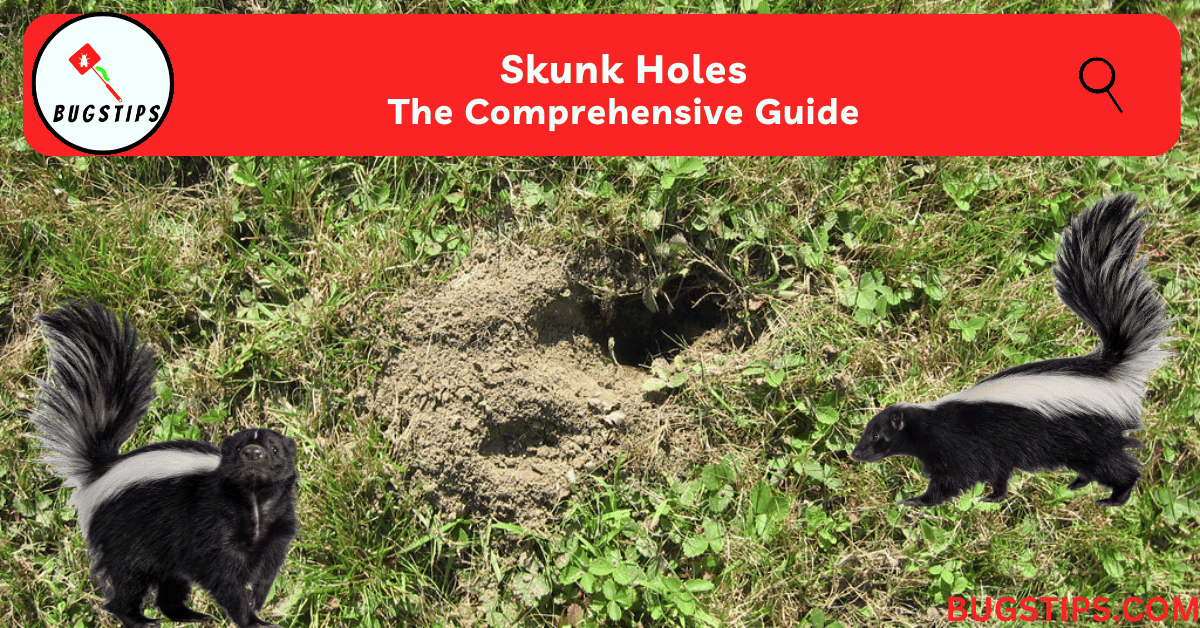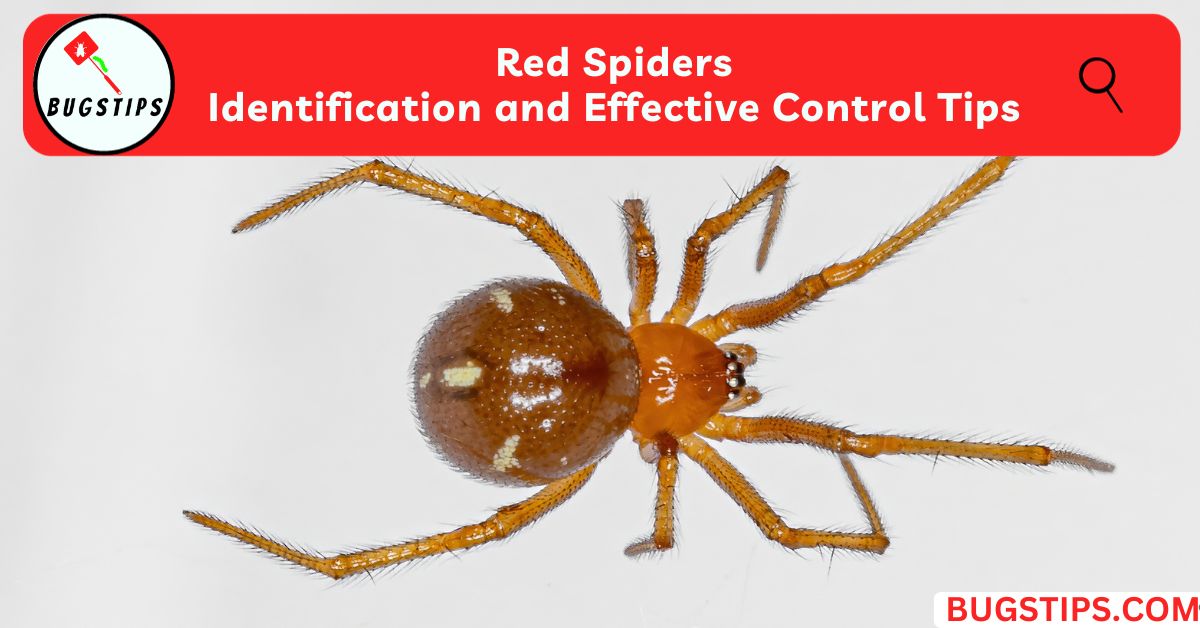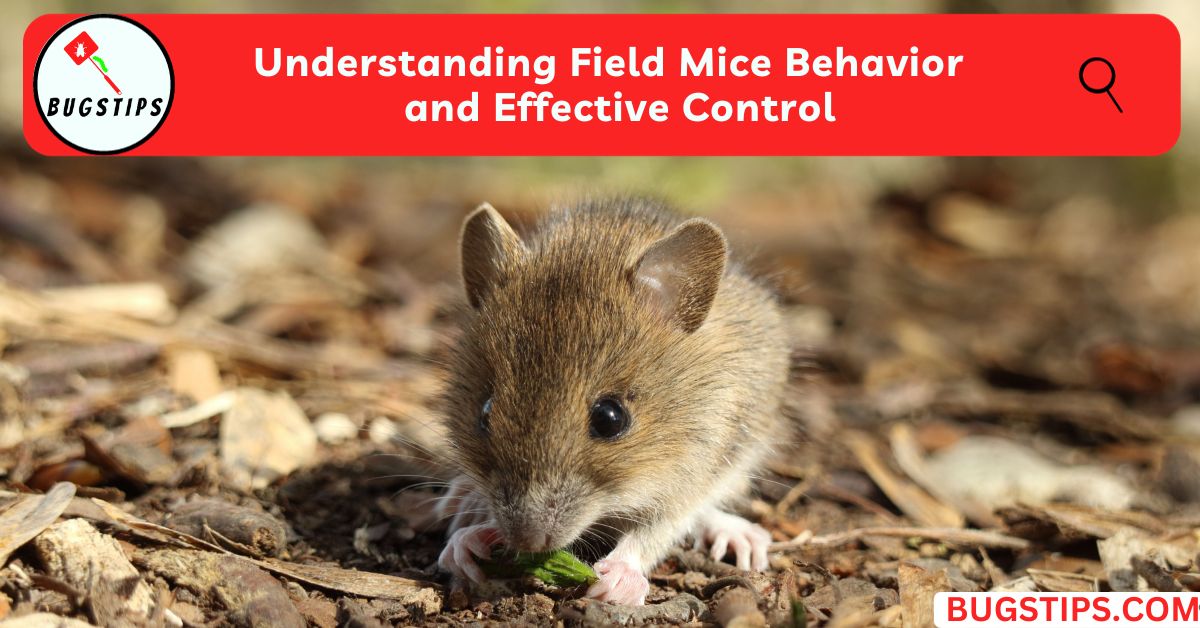This post may contain affiliate links which means as an Amazon Associate, this site may earn a small commission on qualified purchases made through links at no extra cost to you. Learn more on Affiliate Disclosure
Skunks may be cute and furry, but they can cause a lot of damage when they dig holes in your yard. These holes can be unsightly and dangerous, especially if you or your pets accidentally step into them.
But what exactly is a skunk hole, and how can you identify one? In this article, we’ll take a closer look at skunk holes and dens, and provide some tips on how to deal with these pesky critters.
Whether you’re a homeowner or a renter, this information will be valuable in helping you keep your property safe and skunk-free.
What is a Skunk Hole?
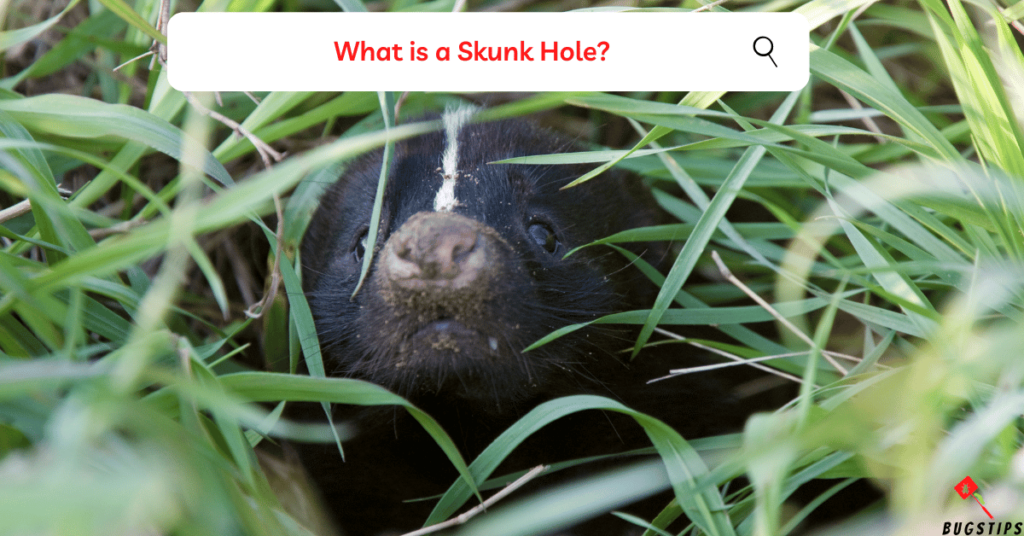
A skunk hole is a hole that is dug by a skunk for various reasons. Skunks are known to dig holes for a variety of reasons, including to find food, shelter, and a place to raise their young. Skunk holes are typically found in gardens, lawns, and other grassy areas. They are usually about 3-4 inches in diameter and several inches deep.
Skunk holes can be identified by the presence of loose soil around the entrance and the scent of skunk spray. If you find a skunk hole on your property, it’s important to take action to prevent further damage and keep the skunks away.
How Do Find a Skunk Den?
To find a skunk den, you’ll need to look for signs of skunk activity in your yard or around your property. Skunks often dig burrows in the ground for shelter and protection, and these burrows can be located under sheds, decks, porches, and other structures.
Here are some tips on how to find a skunk den:
- Look for holes in the ground
- Skunk burrows are typically about 6-8 inches in diameter and have loose soil around the entrance. Look for holes in the ground that fit this description.
- Follow the scent
- Skunks have a distinctive and strong odor that can help you locate their den. If you notice a strong smell of skunks in your yard or near your home, it may be a sign that skunks are living nearby.
- Watch for skunk activity
- Skunks are most active at dawn and dusk, so keep an eye out for skunks leaving or entering a burrow during these times.
- Use a flashlight
- If you suspect a skunk den is located under a structure, use a flashlight to look for signs of activity or burrow entrances.
Related Article – Exploring Ant Hills: A Comprehensive Guide
What Do Skunk Holes Look Like
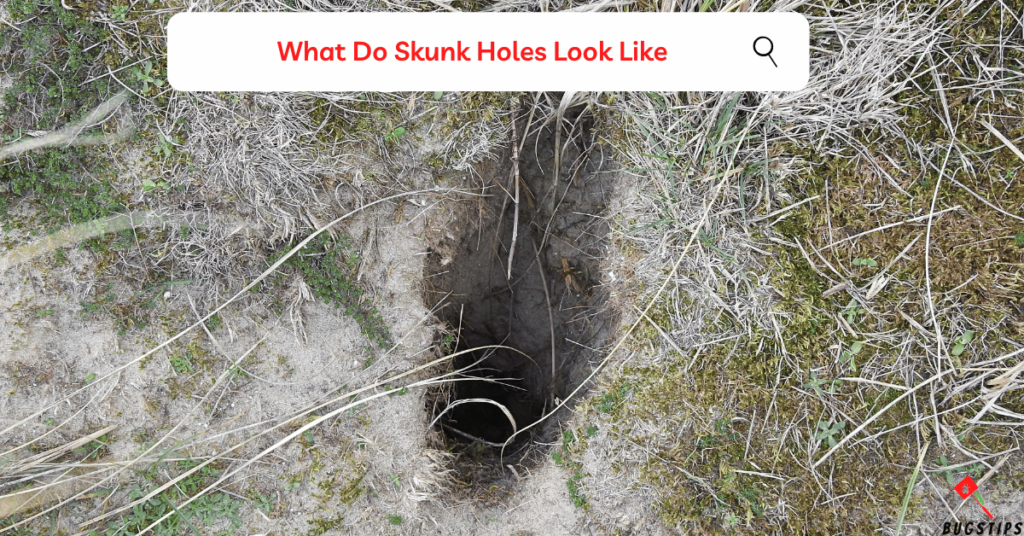
Skunk holes are small openings in the ground that are typically about 3-4 inches in diameter and several inches deep. The entrance to skunk holes is usually wider than those made by other animals, such as moles or voles, which tend to be more narrow.
Skunk holes may be accompanied by small mounds of soil or debris, which are the result of the digging activity of the skunks. The soil around the hole may also be disturbed or loose, indicating recent digging activity. Skunk holes can be found in grassy areas, gardens, and under structures such as sheds or decks.
Does a Skunk Den Smell?
Skunk dens can have a strong and distinct odor. Skunks produce a musky odor that is used for defense against predators, and this odor can also be present in and around their dens. The smell from a skunk den can be particularly strong if the den is located near your home or outdoor living areas.
The strength of the smell can vary depending on factors such as the size of the den, the number of skunks living in the den, and the amount of time the skunks have been using the den.
If you notice a strong odor of skunk near your home or property, it’s important to investigate the source of the smell to determine if there is a skunk den nearby.
How Big Are Skunk Burrow Holes?
Skunk burrow holes, which serve as entrances to their dens, typically measure around 3 to 4 inches in diameter. The size of these holes can vary depending on factors such as the skunk’s size and the specific location where the burrow is located.
It’s important to note that the age of the burrow, soil type, and surrounding environment can also influence the size of the hole. Skunks are adept diggers and create burrows that suit their needs and provide them with a safe and secure shelter.
How Deep is a Skunk Den?
Skunk dens are typically found at depths ranging from 2 to 4 feet beneath the surface. Skunks are skilled diggers and create burrows in areas with suitable soil conditions. The depth of a skunk den can vary depending on factors such as the specific location, soil type, and environmental considerations.
Skunks prefer to dig their dens in loose or sandy soil, as it makes excavation easier for them. By burrowing underground, skunks create a protected space where they can rest, raise their young, and seek shelter from predators and extreme temperatures.
The depth of a skunk den provides insulation and security for the skunks residing inside. It helps to regulate the temperature within the den, keeping it relatively stable and comfortable for the skunks throughout the year.
You May Also Like – Earwigs in Mailbox? 8 Proven Ways to Keep Them Out
How Small a Hole Can a Skunk Fit Through?
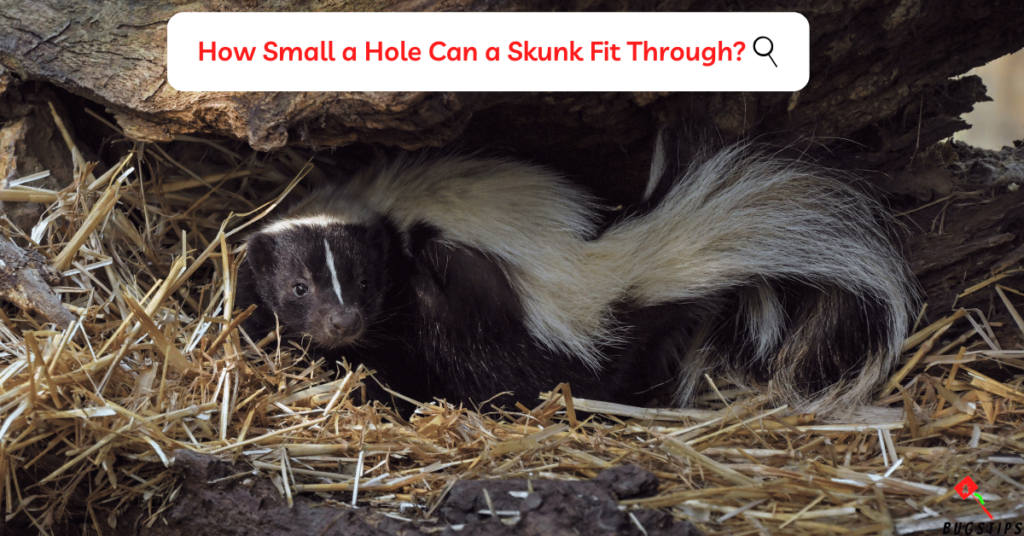
Skunks are flexible creatures that can squeeze through surprisingly small openings. They have the ability to compress their bodies to fit through narrow spaces. Generally, a skunk can fit through a hole as small as 4 inches in diameter.
Their slender body shape, combined with their ability to tuck their legs and lower their heads, enables skunks to navigate through tight spaces. They can contort their bodies to pass through small gaps, such as openings in fences, gaps under structures, or cracks in foundations.
What Time of Year Do Skunks Nest?
Skunks typically establish their nests during the mating season, which commonly takes place between February and March. During this period, male skunks actively seek out female mates. Female skunks, on the other hand, usually have one litter per year.
The gestation period for skunks lasts approximately 60 to 75 days. After mating, the female skunk retreats to her den to prepare for the arrival of her offspring. Skunks exhibit a unique reproductive behavior known as delayed implantation.
This means that although fertilization occurs shortly after mating, the embryo does not implant in the uterus until several weeks later, resulting in delayed development of the embryos.
Skunks do not hibernate like some other animals, but they tend to stay in their dens during the winter months. This period of reduced activity is referred to as “winter dormancy.” While in their dens, skunks may enter a state of lowered metabolism, conserving energy until the arrival of spring.
So skunks nest during the mating season, which typically occurs from February to March. Female skunks have a gestation period of 60 to 75 days and usually give birth to their young in the spring. Skunks spend the winter in their dens, displaying reduced activity during this time.
What Kind of Holes Does a Skunk Dig?
Skunks are capable of digging different types of holes depending on their needs.
Here are some examples of the types of holes that skunks can dig:

- Burrow holes
- Burrow Holes: Skunks dig burrows, also known as dens, to serve as their shelters. These burrows are typically located underground and consist of a main chamber connected to a network of tunnels. The entrance hole to a skunk burrow is usually around 3 to 4 inches in diameter, providing access to the underground dwelling.
- Foraging holes
- Skunks also dig small holes in the ground when they are searching for food. These holes are usually shallow and less than an inch in diameter. Skunks may dig these small holes in lawns or gardens when they are searching for insects or other small prey.
- Nesting Holes
- Female skunks may dig small holes in the ground when they are preparing to give birth to their young. These holes are typically smaller than burrow holes and may be located in more secluded areas, such as under a bush or in a dense patch of vegetation. and These holes serve as safe and secluded spaces for raising their young.
- Escaping Holes
- Skunks may dig holes as escape routes when they feel threatened or pursued by predators. These escape holes allow skunks to quickly retreat to safety. The holes are typically shallow and dug hastily to provide temporary refuge.
Skunks are adaptable diggers, and the type of hole they create depends on the purpose and situation at hand. Whether it burrows for shelter, foraging holes for food, nest holes for raising young, or escape holes for safety, skunks demonstrate their remarkable digging abilities in various ways.
Do Skunks Have More Than One Entrance to Their Den?
Yes, skunks often have more than one entrance to their den. Having multiple entrances allows the skunks to easily come and go from the den and provides them with multiple escape routes in case of danger.
Skunks may dig several entrance holes to their burrows, and these holes may be located in different places such as under sheds, decks, or other structures.
In addition to providing escape routes, having multiple entrances to their den also allows skunks to better regulate the temperature and airflow within their burrow. Skunks may block off some entrances or open them up depending on the weather and other environmental factors.
However, it’s important to note that while skunks may have multiple entrances to their den, they typically use only one as the primary entrance. The secondary entrances are used less frequently and mainly serve as backup options.
How Many Skunks Live in a Hole?
Skunks are generally solitary animals and prefer to live alone or in small family groups. Typically, only one skunk, either male or female, occupies a specific burrow or den at a time. However, there are a few exceptions to this general rule.
During the mating season, male skunks may temporarily share a den with a female skunk. This occurs when the male is seeking a mate and establishes a temporary presence in the female’s den. Once mating is complete, the male usually moves on to find another den or shelter.
Female skunks, on the other hand, may occasionally share their dens with their offspring. After giving birth, the female skunk raises her young in the den until they are old enough to venture out on their own. This period typically lasts a few months, during which time the mother skunk provides care and protection to her litter.
While it’s uncommon for multiple skunks to permanently reside together in a single den, it’s not unheard of for related skunks to use nearby dens within the same general area. However, the primary use of a specific hole or den is usually exclusive to one skunk at a time.
Do Skunks Come Back to the Same Den?
Skunks are known to come back to the same den year after year, especially if they have successfully raised their young there in the past. Skunks are creatures of habit and prefer familiar and safe places to live in.
Skunks often use the same den for breeding and raising their young, and they may return to the same den for many years. Female skunks are particularly likely to return to the same den, as they seek out safe and secure locations to give birth and raise their young.
Skunks may also return to the same den during the winter months to conserve warmth and avoid extreme temperatures. During the winter, skunks may form communal dens with other skunks to share body heat and conserve energy.
Do Skunks Leave Their Den Every Night?
skunks are nocturnal animals, meaning they are most active during the night. As nocturnal creatures, skunks leave their dens every night to search for food, explore their surroundings, and engage in other activities.
Skunks have a diverse diet that includes insects, small mammals, amphibians, fruits, and vegetation. They use their keen sense of smell to locate their preferred food sources. When night falls, skunks venture out from their dens in search of food, covering an average territory of about 1 to 2 miles.
While skunks are primarily active during the night, their activity levels may vary depending on factors such as food availability, weather conditions, and the breeding season. During periods of extreme cold or inclement weather, skunks may reduce their activity and remain in their dens for longer periods.
After a night of foraging and exploring, skunks return to their dens before dawn. They seek the safety and shelter provided by their dens during the daylight hours when they are less active.
Do Skunks Burrow Under Houses?
skunks are known to burrow under houses or other structures. Skunks are skilled diggers and may seek shelter and protection by creating burrows beneath buildings. They are attracted to the dark and secluded spaces that can be found underneath houses, sheds, decks, or porches.
Skunks often choose these areas because they provide a safe and secure environment to establish their dens. The space beneath a house offers protection from predators, extreme weather conditions, and disturbances. Skunks can access these areas through existing openings or by digging their own entrances.
Should I Be Worried About Skunks in My Yard?
While skunks can be a nuisance and cause damage to lawns and gardens, they generally are not a threat to humans and pets. Skunks are typically non-aggressive and will only spray their musky odor as a defense mechanism if they feel threatened or cornered.
However, if you are a gardener, it’s important to take steps to protect your plants from skunks, which may dig holes in your garden in search of insects and other small prey. Skunks are known to dig holes in lawns and gardens in search of food, and they may also burrow under sheds, decks, and other structures.
How To Seal a Skunk Hole
Sealing a skunk hole can help prevent skunks from accessing unwanted areas and causing potential issues in your yard or under your house.
Here’s a step-by-step guide on how to seal a skunk hole effectively:
- Identify the Entry Points
- Before sealing the hole, it’s crucial to identify all the entry points used by the skunks. Skunks can have multiple entrances to their dens, so inspect the area carefully for any openings or burrow entrances.
- Gather the Necessary Materials
- You will need suitable materials to seal the skunk hole effectively. Some commonly used materials include heavy-duty wire mesh, galvanized hardware cloth, steel wool, or concrete. Choose a material that is sturdy and resistant to skunk digging.
- Prepare the Hole
- Clear any debris or loose soil around the skunk hole to create a clean working area. Use a shovel or garden tool to carefully remove any dirt or vegetation obstructing the entrance.
- Install the Barrier
- Cut the chosen material to a size that covers the skunk hole completely. Ensure the barrier is large enough to extend beyond the hole’s edges to prevent skunks from digging around it. Attach the material securely using screws, nails, or heavy-duty staples.
- Fill Gaps with Sealant
- Use an appropriate sealant, such as silicone caulk or expanding foam, to fill any gaps or cracks around the edges of the barrier. This will help create a more secure seal and prevent skunks from squeezing through small openings.
- Reinforce with Underground Barriers
- For added protection, consider installing an underground barrier around the perimeter of the area where skunks may dig. Bury a sturdy material like hardware cloth or heavy-gauge wire mesh several inches below the ground to deter skunks from burrowing underneath.
- Monitor and Maintain
- Regularly inspect the sealed area to ensure there are no new entry points or signs of skunk activity. Make any necessary repairs promptly to maintain the integrity of the seal.
If you are unsure about sealing the skunk hole or dealing with skunk-related issues, it's recommended to consult with a wildlife professional who can provide expert guidance and assistance tailored to your specific situation.
Related Article – How to Get Rid of Ant Hills
Final Thoughts
Skunks dig burrows in lawns and gardens for shelter and protection. Identifying these burrows is important to prevent further damage. Burrows can vary in size and skunks can fit through small holes.
Sealing holes and keeping outdoor areas clean can prevent damage. It’s best to take preventive measures rather than trying to remove skunks once they are established.
FAQs
How do you identify a skunk burrow?
Skunk burrows are typically shallow holes in the ground, often surrounded by loose soil. They may have multiple entrances and may be located under structures like decks, sheds, or porches.
Why do skunks dig holes?
Skunks dig holes for various reasons, including foraging for food, marking territory, creating dens for nesting or raising their young, and seeking shelter from extreme weather or predators.
How do you tell if a skunk is living in your yard?
Signs of skunks living in your yard may include burrows or holes in the ground, a musky odor, and skunk tracks. You may also notice damage to your lawn or garden caused by skunks digging for food.
Do skunks come back to the same den?
Skunks have a tendency to return to the same den if it provides suitable conditions and remains undisturbed. However, they may also relocate if their den is compromised or if they find a more favorable site.
Are skunk holes a sign of a larger infestation?
Skunk holes alone may not necessarily indicate a larger infestation. Skunks usually create burrows for individual or family use. However, if you observe multiple skunks or signs of extensive digging, it may indicate a higher skunk population in the area.
Can skunk holes damage foundations?
Skunk holes can weaken foundations and cause structural damage to buildings and other structures if left untreated.
Will mothballs keep skunks out of my yard?
Mothballs are not an effective deterrent for skunks and may be harmful to pets and wildlife. It’s better to use natural repellents, such as pepper spray or predator urine, to keep skunks away from your property.
How to stop skunks from digging holes?
To stop skunks from digging holes, it’s important to identify and seal any holes, use barriers such as wire mesh or rocks, and keep outdoor areas clean and free of food sources. Planting skunk-resistant plants and using motion-activated sprinklers may also help to deter skunks from digging in your garden.
Resources – (for further reading)
Michigan State University – Who’s that digging in my yard: Skunks, raccoons or moles?
Colorado State University – 6.500 – Coping With Skunks
University of Nebraska–Lincoln – Dealing With Skunks

